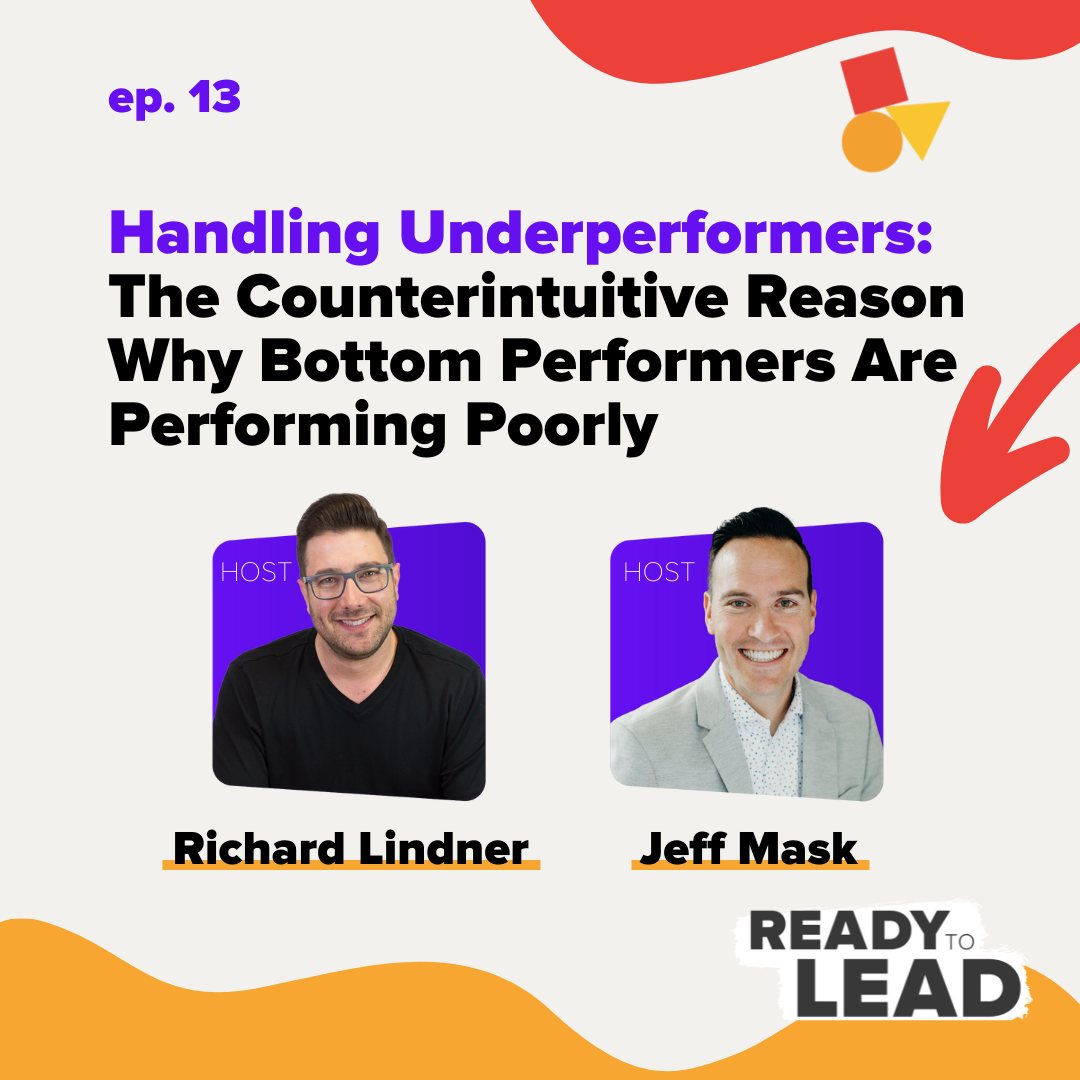When we focus the bulk of our time on underperformers and fixing problems, we bring the rest of the team down.
Every time you fix something, does something else break? Are you constantly drained from plugging leaks and putting out fires? Does it feel like your workweek is just a giant real-life game of Whack-a-Mole?
If so, chances are, you’ve probably fallen into the trap of always focusing on the underperformer. We’re hardwired as humans—and especially as leaders—to fix what’s breaking. We bounce from one broken thing to the next. Some of us hang our identity on that. But what happens is that we unintentionally neglect and overlook what’s going well. And our reward for fixing one problem is being handed the next.
In this episode, co-hosts Richard Lindner and Jeff Mask talk about our tendency to focus on underperformers and how it’s not a sustainable way to run a business. There’s a much better way to get things done.
The Business Law of Thirds
Jeff walks us through a framework where you envision a rectangle divided into thirds. It’s The Law of Thirds, but the business one, not the photography one. In the top third are your high performers. When you’re growing something, leading through change, they’re lifting everyone around them, championing the cause, on board, a joy to lead.
At the very opposite end of the rectangle, the bottom third, are the people who are frustrated and super cynical. They’re not just questioning the strategy (that can actually be helpful), but they’re always pessimistic, sowing seeds of doubt, a lot of toxicity.
In the middle third are the fence-sitters, not quite sure where they stand. They could really go either way—and they do.
So, where do we as leaders focus? Our tendency is to pay attention to the bottom third and invest time there, because they need TLC. They’re loud, squeaky, and we’re concerned they’re going to affect everyone else.
But, when we focus on the bottom third, two things happen. The fence-sitters realize where the attention is, and they start gravitating to the bottom. They do it subconsciously. We just go where the attention is, as human beings. Focusing on the bottom means you get more people doing the grumbling.
The second thing that happens is you alienate the top performers. Some of them will leave, frustrated with the situation. They get sick and tired of the hand-holding of all the mediocre people. They don’t thrive in that environment.
Be Careful Not to Perpetuate the Cycle
When we focus on the underperformers, we’re modeling how to get attention: negativity. Negative actions get positive rewards. We’ve got to rewire that.
When you’re so focused on trying to get an underperformer to the bare minimum, what’s happening to the ignored high performer? You might be thinking about High Performer Jane, “If everyone could just be like Jane…” Well, are you talking to Jane, investing in her, challenging her? Or are you putting her on a pedestal, comparing people to her, but then not focusing on her, giving her any attention, helping her go from good to great to greater?
Jim Collins, in his incredible book, Good to Great, says, “People are not your most important assets; the right people are.” Are you focusing on the right people, or do you need to flip the rectangle? Richard and Jeff would challenge you to focus just 25% of your time on the underperformers and 75% on the people who want to go from good to great.
When you focus positive attention on the high performers, people who are excited, then the people in the middle will gravitate to the attention, the excitement, the energy. Some of the bottom third will jump out of the boat and leave. Fine. Leading them is one of the hardest things you have to do. We don’t want to lose the mediocre people, but they suck everyone’s energy.
High performers are 400% more productive than average performers. Think of what else could be done, how much more profitable, focused, energetic you can be if you focused on them. Leading excited overperformers makes Sunday night fun and energizing. You’re actually excited for Monday morning. Where our focus goes, our energy flows. Where energy flows is where we grow.
Recognize, Replace, and Recite
Be honest with yourself. Sometimes we focus on underperformers because we secretly enjoy having these problems to solve. It makes us feel like we’re needed, valuable. When you find yourself saying “I’m just so busy,” what we’re doing is feeding our ego that we’re important. We’re tired and saying we don’t want to be busy, but we’re feeding it. We do want to be busy, and a martyr vibe happens. Shift that mindset. Instead of a little bit of glory and brownie points for being a fixer, flip it. You don’t need to put out fires to be valuable. Change the narrative.
Recognize, Replace, and Recite are the 3 Rs of the mindset framework.Recognize when things are off. Replace it with something more powerful. Recite who we are. I lead high performing people. Focus on the overperformers and watch everyone else rise, get better, or bail out. Or: I take things that are working and scale them. When problems come up, you can still solve them. You just don’t look for them every waking moment.
Leadership is an awesome journey because we’re truly affecting lives for the better, if we so choose.
Richard and Jeff want to hear from YOU. Is there a topic you want to dive into? Was something in today’s episode a big aha moment for you? Or did you disagree with something? Email them here with your thoughts/questions: feedback@readytolead.com
RESOURCES:
- Good to Great (book by Jim Collins)
OTHER SHOWS YOU MIGHT ENJOY:
- Business Lunch with Roland Frasier and Ryan Deiss
- Perpetual Traffic with Ralph Burns and Kasim Aslam
- DigitalMarketer Podcast


